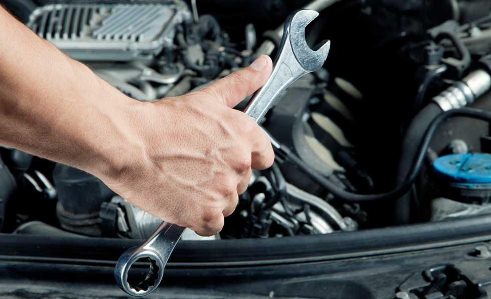
If you own a car, you’ll be familiar with the rising sense of dread which creeps in every time a brand new clanking and clanging noises appears. Even if you’re not an automotive nut, you’re probably pretty fond of your little runaround and get worried when it seems to be under the weather. This is the life of a car owner.
You fret and worry because it’s your connection to the world. Whether it’s shopping trips, the commute to work, school runs, or just dropping in on friends; most people would be lost without their vehicle. This is why routine maintenance is so important. Knowing what to look out for and what to check is an essential part of keeping your car healthy.
Pick a Great Mechanic
While you should be carrying out your own inspections for leaks and faults, you also want to be taking your car for a regular service (twice per year). This is an all-purpose tune up which scrutinises the vehicle for deterioration and developing problems. Also, ensure you enlist the help of trusted mobile mechanics in Brisbane because the last thing you want is to get stranded on the highway.
Check Your Fluids
Ideally, you should know how to change your coolant, power steering, and antifreeze levels, but at the bare minimum, learn how to check them. Some cars let you see right into the containers but most rely on the dipstick method. Find out what the healthy levels are for your vehicle and compare them with the stick reading. It is really easy to top up all three if any (or all) are running a little lower than usual.
Monitor the Serpentine Belts
The general rule of thumb seems to be that a timing belt needs replacing every 100,000 kilometres and a serpentine belt every 60,000 kilometres. If you can’t find or no longer have the vehicle manual, these numbers will suffice. They are not precise, however, so look up the specific figures for your car if you do have the instruction papers. You don’t have to instantly replace either one at this point, but it is a good idea to consult a mechanic about their condition.
Change Your Oil
Most of the newer cars now come with electronic oil gauges, so you don’t have to fiddle around with dipsticks. Either way, learn how to check the amount of oil in the tank and whether it is in a good enough condition for driving. Once again, the general rule of thumb which gets passed around is that you should change the oil every 5,000 kilometres. It is best to read the manual and get a personalised figure though. Muddy, murky oil may indicate a problem, so keep an eye on this, particularly if you drive a lot.
Clean the Battery
It is quite rare for modern cars to need a lot of battery care. They’re mostly self-sufficient. On the other hand, it never hurts to pop the hood and give conduct a quick visual inspection. Keep an eye out for anything unusual like wet oil or accumulations of any kind of substance, whether it be dirt or minerals. The battery contacts should be clean and clear, so brush off any dirt and debris. Don’t forget that keeping a jump start kit in the boot can really change your fortunes.
Why Routine Maintenance Is So Important
All cars age and, while it is possible to keep them in a pristine condition, you’ve got to be willing to fight that natural ageing process. The best way to do this is with careful, consistent maintenance. In other words, don’t wait for a big problem to develop. Get familiar with its quirks and habits, learn how to spot the signs of wear, and show your vehicle a little love from time to time. It’s worth it because you’ll end up saving hundreds of dollars each year on emergency trips to the garage and roadside assistance fees.




